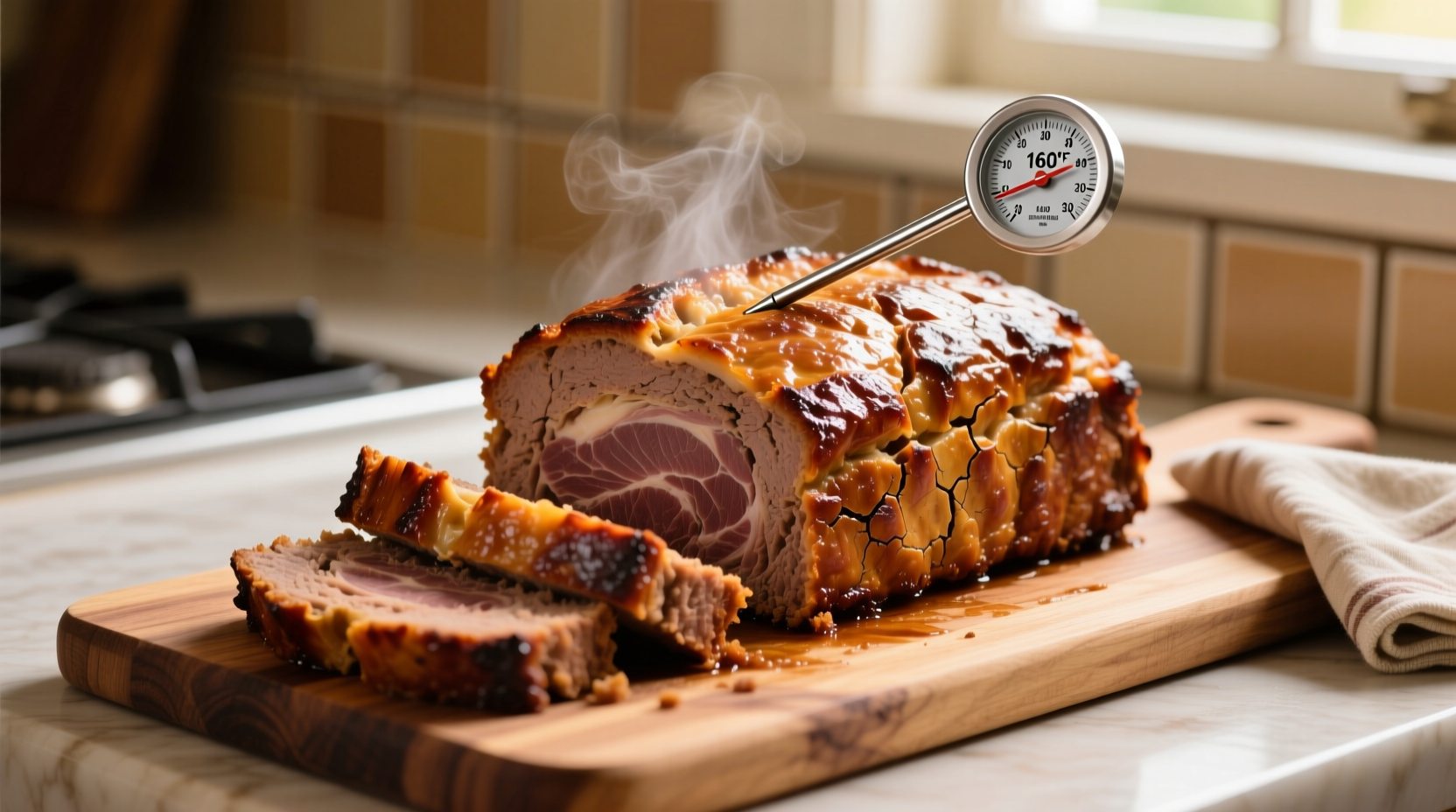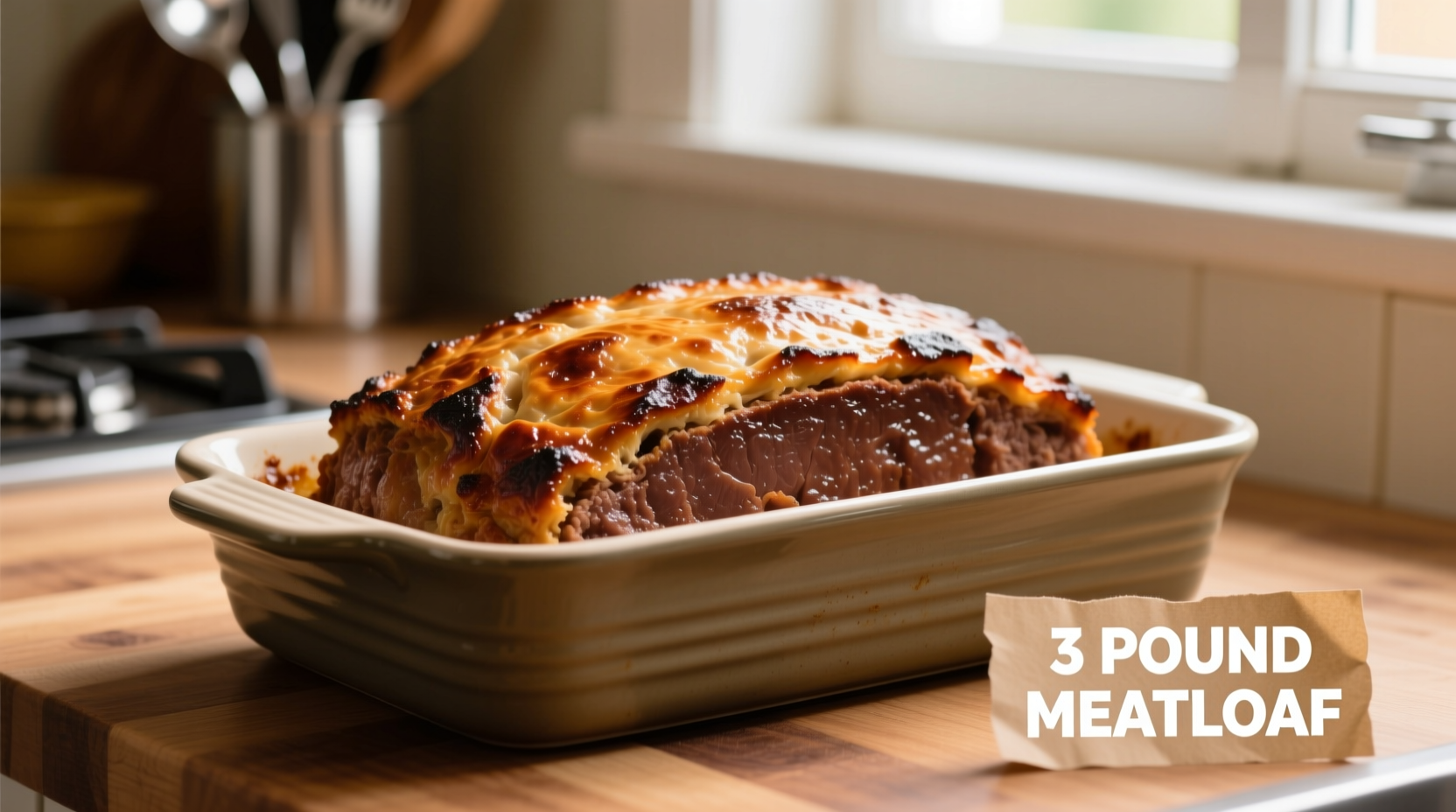The Complete Guide to Perfectly Cooking a 3-Pound Meatloaf
Cooking a 3-pound meatloaf properly requires understanding both timing and temperature science. While many recipes provide general time estimates, actual cooking duration depends on multiple variables including your oven's accuracy, meat composition, and loaf pan type. This guide delivers precise information so you never serve undercooked or dry meatloaf again.Why Standard Cooking Times Aren't Enough
Oven temperatures can vary by as much as 25°F between units, significantly impacting cooking time. The USDA Food Safety and Inspection Service emphasizes that visual cues alone cannot verify meat safety. Ground meats like meatloaf must reach 160°F internally to eliminate harmful bacteria like E. coli and Salmonella.| Meatloaf Weight | Recommended Oven Temp | Approximate Cooking Time | Required Internal Temp |
|---|---|---|---|
| 1-2 pounds | 350°F (175°C) | 45-60 minutes | 160°F (71°C) |
| 3 pounds | 350°F (175°C) | 80-105 minutes | 160°F (71°C) |
| 4-5 pounds | 325°F (163°C) | 120-150 minutes | 160°F (71°C) |
Step-by-Step Cooking Process
Preparation Phase (10 minutes)
Gather your ingredients and equipment before starting. Use a digital meat thermometer—the instant-read type provides the most accurate results. Line your loaf pan with parchment paper for easier removal. Remember that adding vegetables like onions and peppers increases moisture content, potentially extending cooking time slightly.Cooking Timeline for 3-Pound Meatloaf
- Preheat oven to 350°F (175°C) - allow 15 minutes for proper heating
- Shape meat mixture into loaf form in pan (avoid over-packing)
- Insert thermometer into center before baking
- After 60 minutes, check temperature - should be around 120°F
- After 80 minutes, check again - target 140-150°F range
- At 160°F internal temperature, remove from oven (typically 80-105 minutes)
- Rest 10 minutes before slicing to retain juices

Factors That Affect Cooking Time
Several variables influence how long your 3-pound meatloaf needs to cook:- Meat composition - Higher fat content (80/20 ground beef) cooks faster than lean mixes
- Oven type - Convection ovens reduce cooking time by 25%
- Loaf pan material - Glass pans conduct heat differently than metal
- Starting temperature - Chilled mixture adds 10-15 minutes vs room temperature
- Additional ingredients - High-moisture vegetables extend cooking time
Troubleshooting Common Problems
Meatloaf Not Reaching 160°F After Expected Time
If your thermometer shows below 150°F at the 90-minute mark:- Verify oven temperature with a separate oven thermometer
- Cover loosely with foil to retain heat
- Check thermometer placement - it should be in the geometric center
- Continue checking every 5-7 minutes until reaching 160°F
Avoiding Overcooking
Remove meatloaf from oven when thermometer reads 155°F - carryover cooking will raise temperature 5° during resting. Overcooking beyond 165°F causes proteins to tighten excessively, resulting in dry, crumbly texture.Food Safety Essentials
The USDA Food Safety and Inspection Service mandates that ground beef products reach 160°F internally to destroy harmful pathogens. Unlike whole cuts where surface bacteria are eliminated during searing, ground meats distribute potential contaminants throughout the product. Never rely on color alone to determine doneness - fully cooked ground beef can still appear pink due to myoglobin reactions. Remember these critical safety points:- Always wash hands and surfaces after handling raw meat
- Never leave cooked meatloaf at room temperature more than 2 hours
- Refrigerate leftovers within 2 hours of cooking
- Reheat to 165°F before serving leftovers
Pro Tips for Perfect Meatloaf Every Time
- Use a disposable aluminum loaf pan for more even heating
- Add 1/4 cup milk or broth to maintain moisture during extended cooking
- Place meatloaf on middle oven rack for optimal heat circulation
- Apply glaze during the last 30 minutes to prevent burning
- Let meatloaf rest 10 minutes before slicing for cleaner cuts
Frequently Asked Questions
How do I know when my 3-pound meatloaf is done without a thermometer?
Without a thermometer, check by inserting a knife into the center - it should feel hot to the touch when withdrawn. The juices should run clear, not pink. However, the USDA strongly recommends using a thermometer as visual cues alone cannot guarantee food safety for ground meats.
Can I cook a 3-pound meatloaf at 375°F instead of 350°F?
Yes, but reduce cooking time by 10-15 minutes. Higher temperatures can cause exterior overcooking before the center reaches safe temperature. The 350°F standard provides more even cooking for larger meatloaves while ensuring food safety.
Why does my meatloaf fall apart when I slice it?
This usually happens when insufficient binder is used or when slicing too soon. Ensure you include 1/2 cup breadcrumbs or oats per pound of meat, and always let meatloaf rest for 10 minutes after cooking. The resting period allows proteins to restructure, creating cleaner slices.
Should I drain grease from meatloaf while cooking?
For a 3-pound meatloaf, draining grease once at the 60-minute mark can prevent excessive fat accumulation. However, don't drain too early as some fat contributes to flavor development. Use a turkey baster to carefully remove excess grease without disturbing the loaf structure.











 浙公网安备
33010002000092号
浙公网安备
33010002000092号 浙B2-20120091-4
浙B2-20120091-4